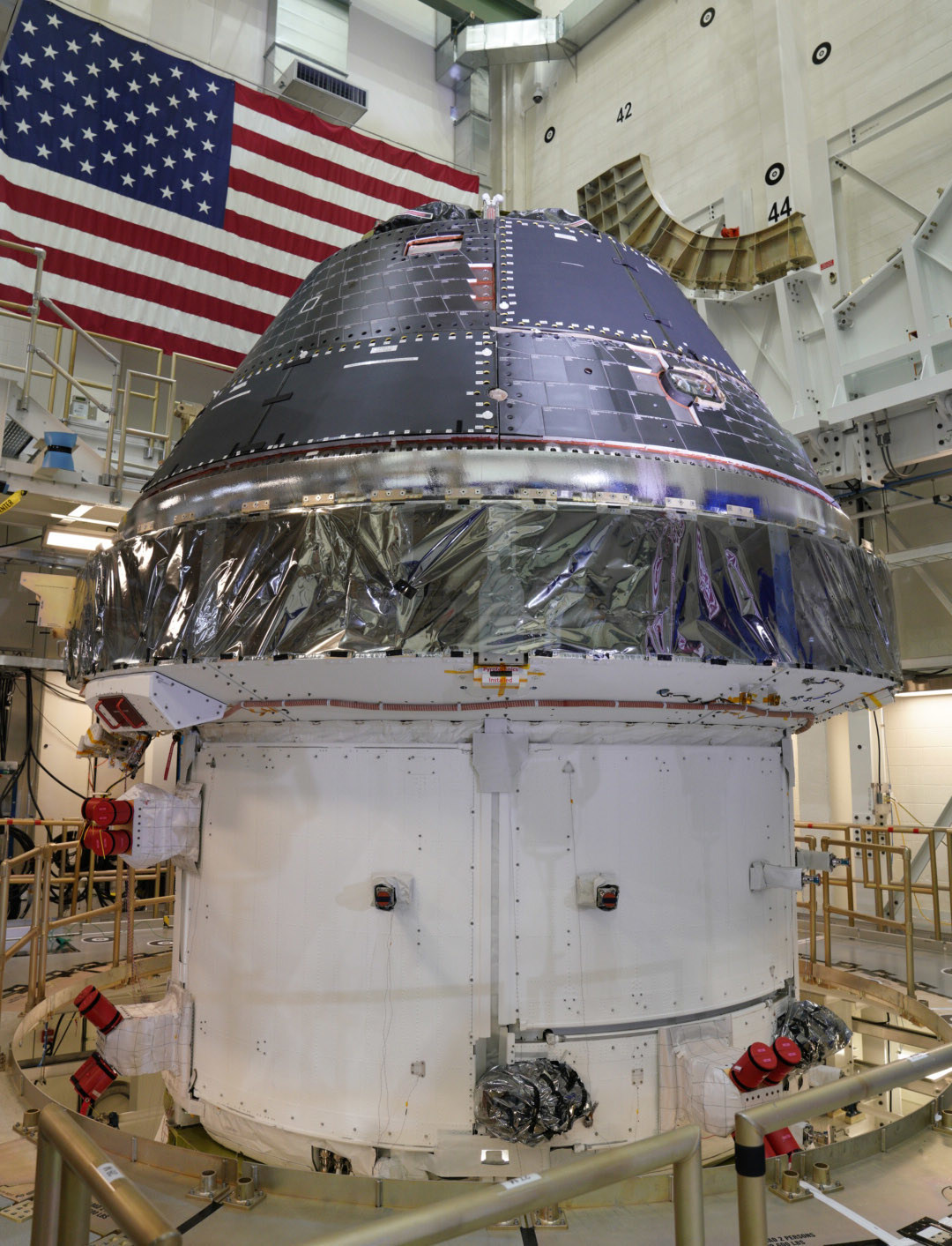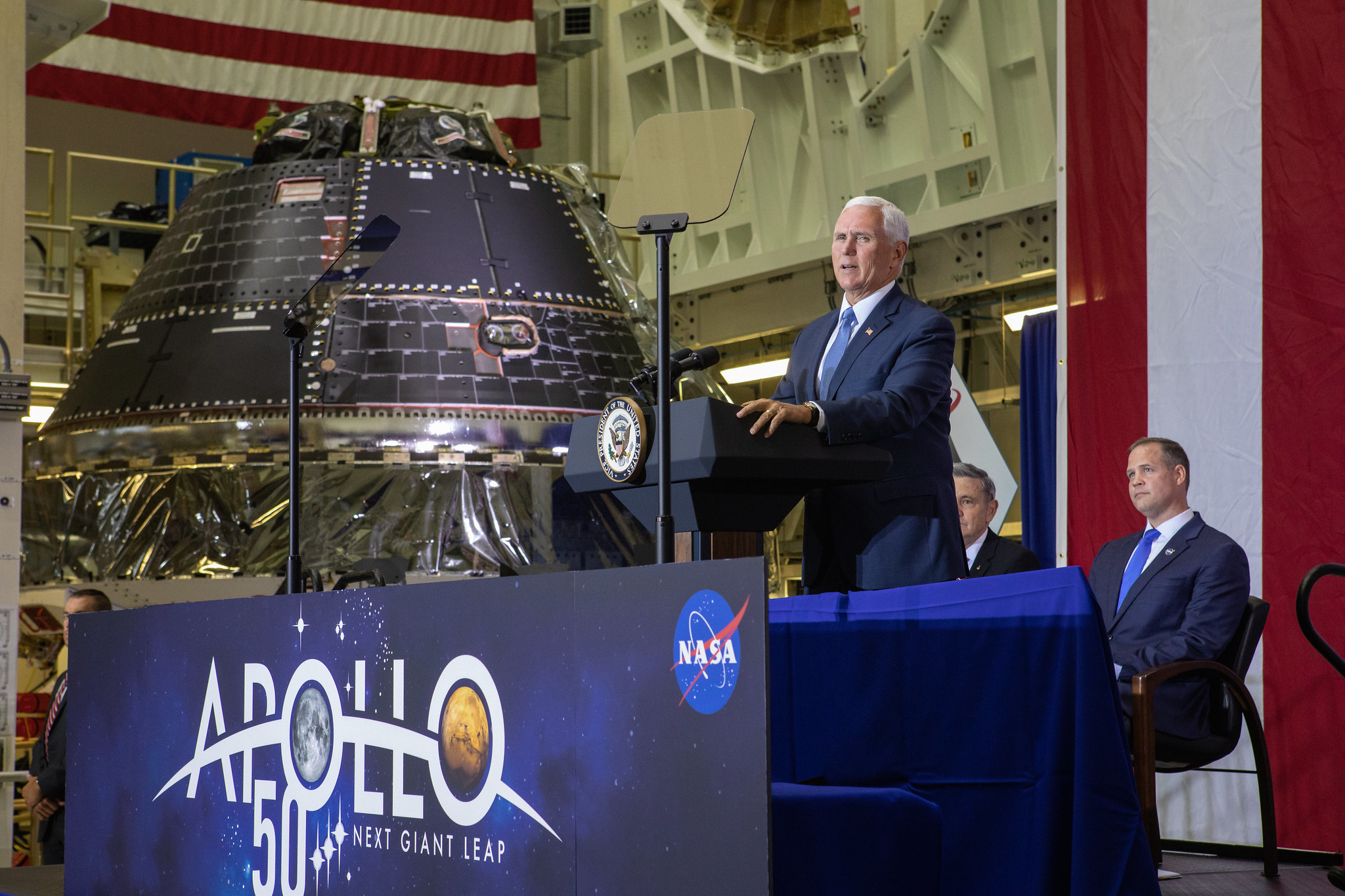The Orion Spacecraft for NASA's 2020 Trip Around the Moon Is Ready to Go (Photo)

NASA's crewed moon return is drawing ever closer.
Aerospace company Lockheed Martin has finished building the Orion capsule that will fly on the uncrewed Artemis 1 test mission around the moon next summer, U.S. Vice President Mike Pence announced Saturday (July 20) — the 50th anniversary of the historic Apollo 11 moon landing.
The capsule has also been stacked atop its European-built service module at NASA's Kennedy Space Center in Florida, Lockheed Martin representatives said.
Related: Orion Explained: NASA's Multipurpose Crew Vehicle (Infographic)
"Throughout assembly, the team tested and validated the many systems a hundred different ways to ensure they will operate as designed in the harshness of deep space," Mike Hawes, Orion program manager for Lockheed Martin, said in a statement.
"The Artemis 1 flight will test the design and workmanship of the capsule and its service module during the three-week mission out around the moon and back," Hawes said. "We're excited for this mission as it paves the way for the first crewed mission in 2022, Artemis 2."
Artemis is the name of NASA's ambitious lunar-exploration program, which aims to put two astronauts down near the moon's south pole in 2024. The program also looks to build up a long-term, sustainable presence on and around Earth's nearest neighbor shortly thereafter.
Breaking space news, the latest updates on rocket launches, skywatching events and more!
Orion is key to these plans, as is a huge rocket called the Space Launch System (SLS), which is in development. Artemis 1 will mark the first flight of the SLS. Orion has flown once before, on an uncrewed test mission to Earth orbit that lifted off in December 2014 atop a United Launch Alliance Delta IV Heavy rocket.
The plans for Artemis also include building a small moon-orbiting space station called the Gateway. This will serve as a staging point for trips, both crewed and uncrewed, to the lunar surface.
NASA doesn't plan to stop at the moon. The main goal of Artemis is to teach the agency how to live and work in deep space, to help prepare for crewed trips to the ultimate human-spaceflight destination: Mars. NASA wants to put boots on the Red Planet before the end of the 2030s.
- Apollo 11 at 50: A Complete Guide to the Historic Moon Landing Mission
- Orion Spacecraft: Taking Astronauts Beyond Earth Orbit
- NASA's 1st Orion Spacecraft Test Flight in Photos
Mike Wall's book about the search for alien life, "Out There" (Grand Central Publishing, 2018; illustrated by Karl Tate), is out now. Follow him on Twitter @michaeldwall. Follow us on Twitter @Spacedotcom or Facebook.

Michael Wall is a Senior Space Writer with Space.com and joined the team in 2010. He primarily covers exoplanets, spaceflight and military space, but has been known to dabble in the space art beat. His book about the search for alien life, "Out There," was published on Nov. 13, 2018. Before becoming a science writer, Michael worked as a herpetologist and wildlife biologist. He has a Ph.D. in evolutionary biology from the University of Sydney, Australia, a bachelor's degree from the University of Arizona, and a graduate certificate in science writing from the University of California, Santa Cruz. To find out what his latest project is, you can follow Michael on Twitter.

